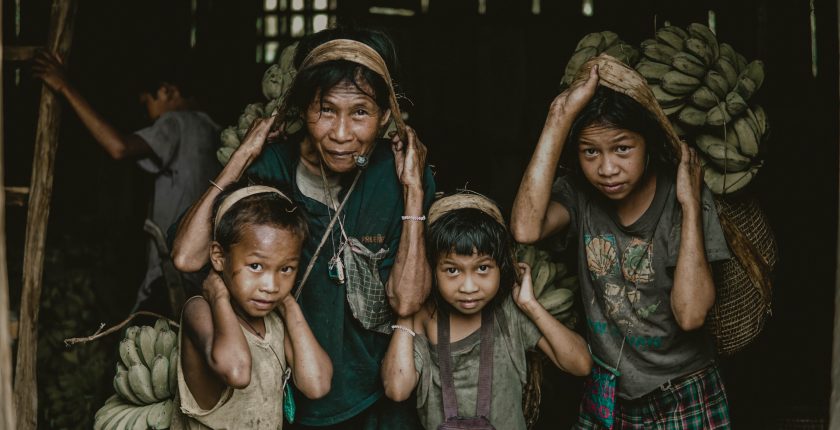World Day Against Child Labour – Rising Numbers of Child Labourers Requires Social Protection for All
Child Labour and its Detrimental Impact
Child labour refers to the deprivation of rights associated with a child and young person’s development. Working at a young age denies a child the mental, physical and social growth needed to develop into a healthy adult. Child labourers are often unable to attend school for long periods. Even if schooling is available, children may still be drawn away from learning by other responsibilities. This is particularly true for girls who might have to balance work, household chores, and looking after younger siblings with learning.
The impact of Child Labour extends beyond reduced access to education, for example, children in the early developmental years are more vulnerable to physical injuries, particularly if engaged as one of the estimated 87million children in hazardous work. Aside from the physical dangers, pro-longed stress and lack of exposure to key learning opportunities have a long-term impact on mental and emotional well-being.
UN’s World Day Against Child Labour and the 2020 Global Estimate Report
Every year the UN’s World Day Against Child Labour aims to draw attention to the issue of Child Labour and advocate for solutions to address the issue. This year the day is accompanied by the release of a new global report by the International Labour Organization (ILO) and UNICEF which tracks progress made towards ending child labour over the last 4 years. This report predicts the impact of Covid-19 and the resulting economic challenges on the future of tackling this problem.
The current number of child labourers is estimated at around 160 million globally, this equates to 1 in 10 children working as child labourers worldwide. Of this number, nearly half of these were classed as working in hazardous conditions that directly harm or are detrimental to their physical and mental well-being. A large percentage were also boys whose number stands at 97 million (ILO, 2020).
For the first time in over 2 decades, there has been a marked rise in the absolute number of children working as child labourers. Although this rise reflects general population growth it also marks a persistent stagnation in progress when viewed as a global whole. However specific regions have successfully seen a persistent downward trend, these regions include Asia, Pacific, Caribbean, and Latin America. However, in Sub-Saharan Africa, the percentage of child labourers has continued to rise and is now estimated to equate to the world’s total number. Population growth, recurrent crises’ and extreme poverty are thought to be the main contributing factors to this rise.
The report also predicted that the number of child labourers will rise by 9 million at the end of 2022. The global pandemic is cited as the major contributing factor, with schools closed for long periods and income loss occurring in already vulnerable families. ‘The new estimates are a wake-up call. We cannot stand by while a new generation of children is put at risk,” said ILO Director-General Guy Ryder. (ILO, 2020)
Can Social Security and Universal Child Benefits Help
Addressing the issue of Child Labour is complex and not easily solved. Families are often pushed into sending their children to work prematurely when faced with economic hardships. Such hardships are bought on by factors such as job loss, sudden changes in family circumstances, or illness. Lack of welfare and access to social support means that this decision to send children to work is often the only viable option to make ends meet. Additionally, children sometimes enter into labour exploitation via trafficking, this is more common amongst children who are refugees fleeing conflict, disaster, or poverty.
The complexity and interconnectedness of the problem mean that initiatives often focus on developing social security options. Several NGOs and Government bodies offer welfare security to households by providing access to free health care, protecting sources of income, and funding education for children. To reverse the upward trend the ILO and UNICEF are calling for adequate social protection for all, including Universal Child Benefits. Reducing a family’s vulnerability to economic hardship would go a long way to secure the healthy development of the next generation and enable them to break the cycle of poverty.
Bibliography
ILO, (10th June 2021) Child labour rises to 160 million – first increase in two decades, https://www.ilo.org/global/about-the-ilo/newsroom/news/WCMS_800090/lang–en/index.htm
ILO, (2021) Child Labour, Global Estimates 2020, Trends and the Road Forwards, https://www.ilo.org/wcmsp5/groups/public/—ed_norm/—ipec/documents/publication/wcms_797515.pdf
UNICEF, (2021) Child labour, https://www.unicef.org/protection/child-labour
World Vision, (2021) Child labor: Facts, FAQs, and how to help end it, https://www.worldvision.org/child-protection-news-stories/child-labor-facts
Diaz, J,. (10th June 2021) Child Labor Surges For The First Time In 20 Years. The Pandemic May Make That Worse, https://www.npr.org/2021/06/10/1005015654/child-labor-surges-for-the-first-time-in-20-years-the-pandemic-may-make-that-wor

